Aggressive construction strategy maintains operations at busy airport
As one of the busiest single-runway general aviation airports in the nation, Addison Airport in Texas couldn't simply shut down its runway to reconstruct and overlay the aging asphalt.
The airport's bustling status necessitated an aggressive approach to extend the pavement's life while keeping the airport operational for more than 700 based aircraft (including a vintage World War II B-29) and countless itinerant customers. The plan of attack involved mid-runway partial reconstruction over two weekends, fast-track construction solutions and non-destructive pavement testing that helped save more than $4 million.
Garver specified full-depth reconstruction in three areas along with a full-length asphalt overlay on the 7,200-foot-long runway, which serves approximately 100,000 operations every year. The project also included extensive runway safety area grading and drainage improvements to meet FAA standards. Electrical upgrades involved new high-intensity runway edge lights, a MALSR approach lighting system, runway guard lights, distance remaining and runway hold signs, and the airfield lighting control and maintenance system.
"This project still makes me say, 'Wow,'" said Derek Tolmachoff, Garver construction observer. "When it came to planning and foresight, we didn't just prepare Plan A. We also developed plans B, C, D and E."
Garver coordinated with airport staff and tenants, several FAA divisions and Addison Tower staff to develop the expedited construction calendar. Following that schedule, EAS Contracting performed nearly $6 million of work in one month.
"It was absolutely essential to get the runway done on time and minimize its closure," said Addison Airport Director Joel Jenkinson, AAE. "Addison is one of the nation's busiest single-runway GA airports—over 90 percent of our traffic is itinerant and about 40 percent are on IFR flight plans. Also, there are more than 1,200 employees working on the airport at various businesses, and all of those jobs depend on the runway functioning."
Contingencies for the Contingencies
Garver separated the construction into three major phases and kept the runway open during work on the north and south ends. This was accomplished by relocating the thresholds and limiting the schedule to 30 days on each end. However, the airport couldn't afford to close its runway for a month to work in the middle, a 44,000-square-foot area. Instead, Garver used a time-sensitive design and scheduled the work for two weekend closures.
Rather than treating expansive clays with lime—which can be a week-long process to remove the expansive properties—Garver's approach reconstructed the pavement with a cement-treated base (subjected to micro-cracking), an asphalt base and an asphalt surface.
Micro-cracking is a construction process that passes a vibrating roller over a cement-treated base. This creates a series of tiny cracks in the base and accommodates shrinkage, which helps prevent large cracks from forming and reduces the potential for reflective cracking.
Because of the limited window to work in the middle of the runway, Garver required the construction contractor to have a backup paver and asphalt plant on standby. This foresight proved essential when the primary asphalt plant stopped working during a weekend closure. Having a second plant ready to go kept the project on schedule.
"We built in contingencies for the contingencies when it came to scheduling construction so that we'd meet all milestones and interim deadlines," said Garver Project Manager Frank McIllwain, PE. "Our construction observers did an outstanding job of thinking ahead and staying in front of the construction's progress, which kept the project on track."
Non-Destructive Testing
Prior to the design phase, the Texas Department of Transportation estimated the runway reconstruction budget at $15.5 million. Garver hired The TransTec Group and Fugro Consultants to perform Rolling Dynamic Deflectometer (RDD) and Falling Weight Deflectometer (FWD) non-destructive deflection testing on the runway. Using the detailed information gained through these steps, Garver determined that fewer pavement areas required full-depth reconstruction, which reduced the budget to $10.8 million.
The RDD provided a continuous profile of pavement deflections, which were graphed to determine poor, average and good pavement sections. The FWD then measured pavement section deflections at discrete locations, thus providing detailed pavement and layer structural properties. The strength of individual layers within the pavement section was determined through the FWD deflection testing, pavement cores and soil borings.
"We used data obtained from the pavement testing and runway core samples to calculate the pavement's life span, which let us group runway sections into areas of similar runway life," McIllwain said. "We determined that areas unable to achieve at least a 20-year life span after the asphalt overlay needed to be reconstructed."
Award-Winning Project
Every year, the Federal Aviation Administration Southwest Region Airports Division honors one airport that exceeds FAA construction safety standards during a project. This past year, Addison Airport won the Excellence in Construction Safety Award.
Construction activity at an airport greatly increases chances for vehicles or pedestrians to enter an active runway or taxiway. Yet, even with complex construction phasing and continuing aircraft operations, the project had no incidents or runway incursions.
This exceptional safety performance was a significant factor in the Texas Department of Transportation Aviation Division's decision to name Joel Jenkinson the Texas Reliever Airport Manager of the Year.
Around the Airport in 88 Days
Garver's engineering services led to numerous airfield system improvements and safety enhancements during the project's 88 days of construction. One of those upgrades is helping pilots fly into the airport at night.
"The airport is in a dense urban environment—and in a sea of lights, it can be tricky to spot the airfield sometimes," Jenkinson said. "Replacing our medium-intensity runway edge lights with high-intensity lights has really helped that."
A second improvement is helping decrease pilot deviations. The primary parallel taxiway location is non-standard; it is only 300 feet from the runway, which is 100 feet less than the standard separation. Due to this configuration, holding positions are located at the connector and parallel taxiway intersections. This condition is unusual, sometimes surprising pilots after they roll past the hold line.
To address this issue, Garver's design included runway guard lights to alert pilots at all runway hold lines. "The total cost of adding those improvements was relatively small, but in terms of safety payoff, it's been really good," Jenkinson said.
Additional airfield enhancements include:
- Installing precision approach path indicators (PAPIs) on both ends of the runway
- Replacing the runway end identifier lights (REILs) on the Runway 33 end
- Replacing the medium-intensity approach lighting system and runway alignment indicator lights (MALSR) on the Runway 15 end
- Installing a computer mainframe in the electrical vault that controls the lighting system and automatically calls airport maintenance staff to report problems
- Re-grading runway safety areas to meet FAA standards
- Installing two 66-inch reinforced concrete drainage junction structures as well as making $1 million in drainage improvements
- Planting buffalo grass on the airfield, which is non-seeding and does not attract wildlife
What a Way to Celebrate!
At most ribbon-cutting ceremonies, the tool of choice is a pair of scissors. At Addison Airport, the instrument is an airplane flying 15 feet above the runway.
When Addison Airport ceremonially re-opened its 7,200-foot-long runway, aerobatic pilot Jan Collmer flew his plane down the runway and used his propeller to cut the ribbon, which was stretched high above the pavement. Trailing a cloud of white smoke, Collmer flew straight through the ribbon, successfully cutting the material in two.

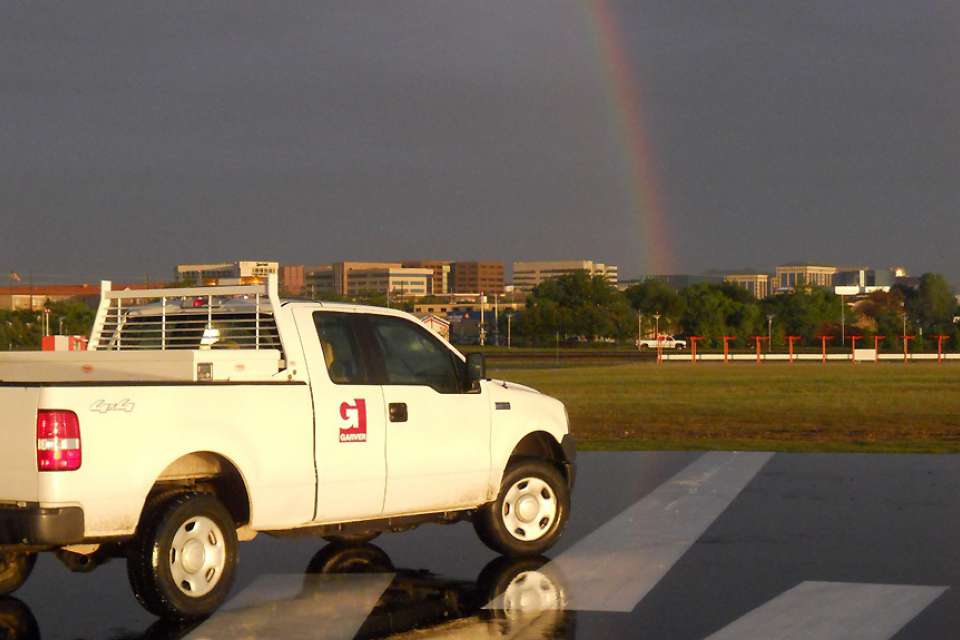
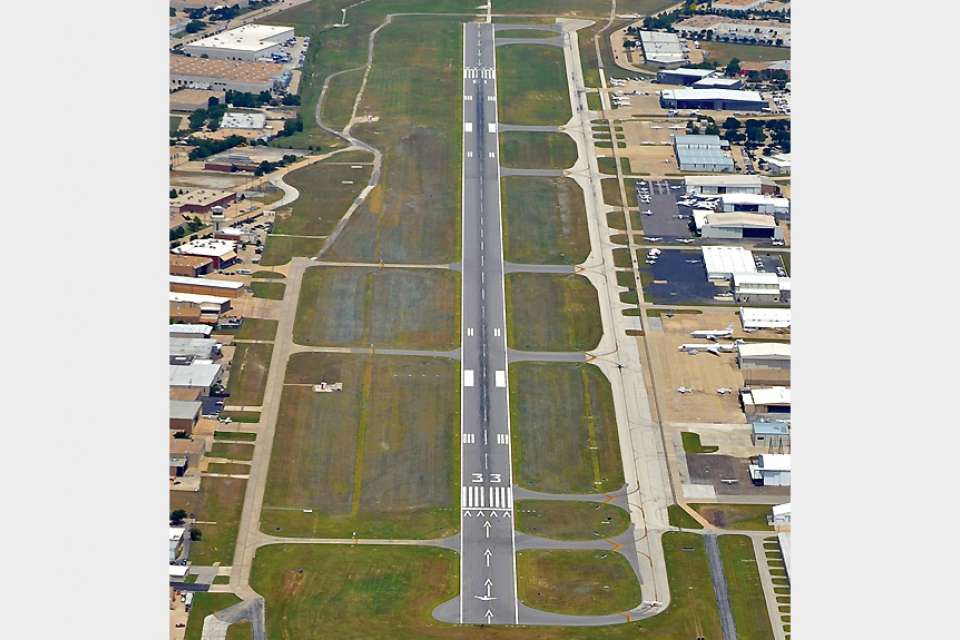
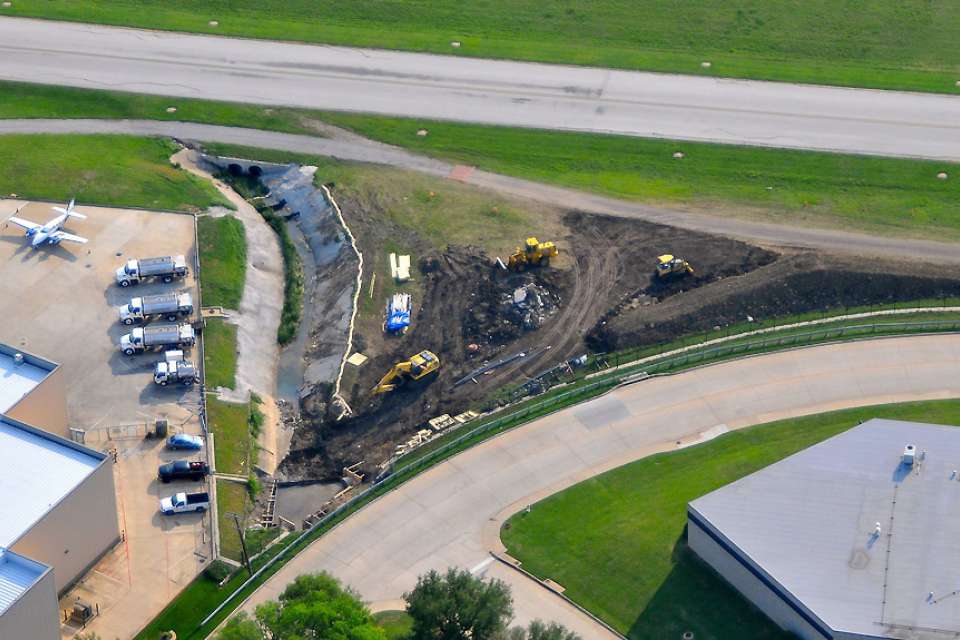
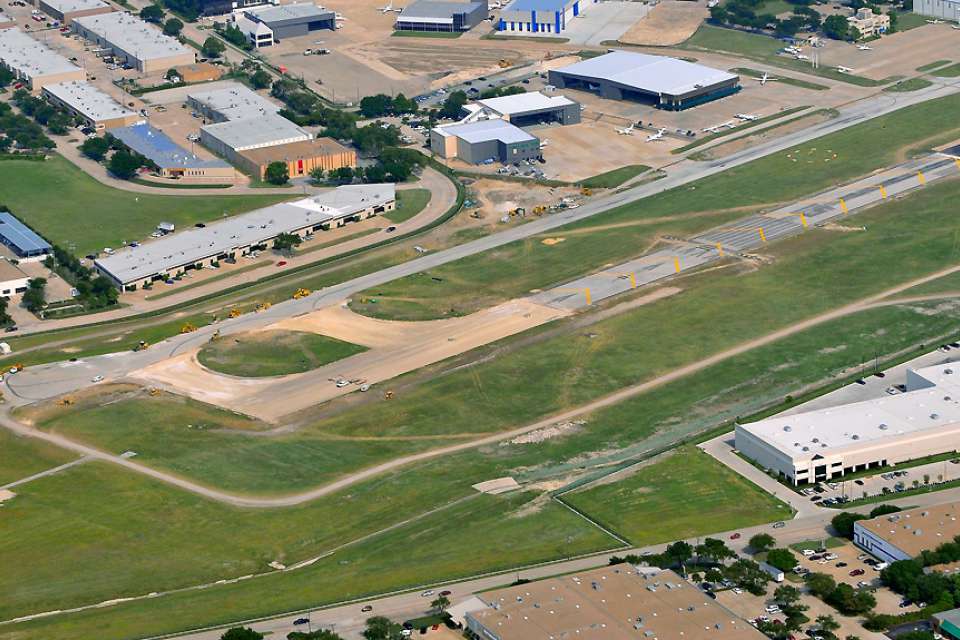



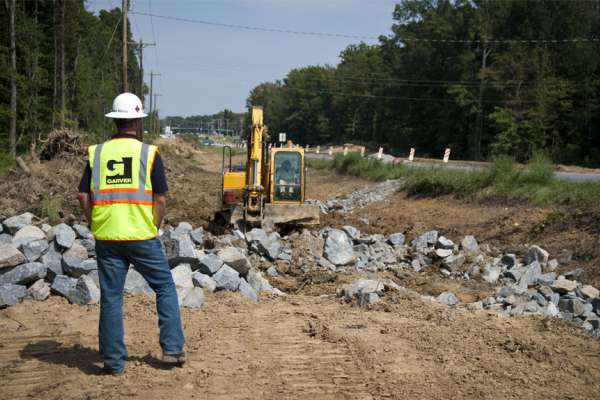


Share this article